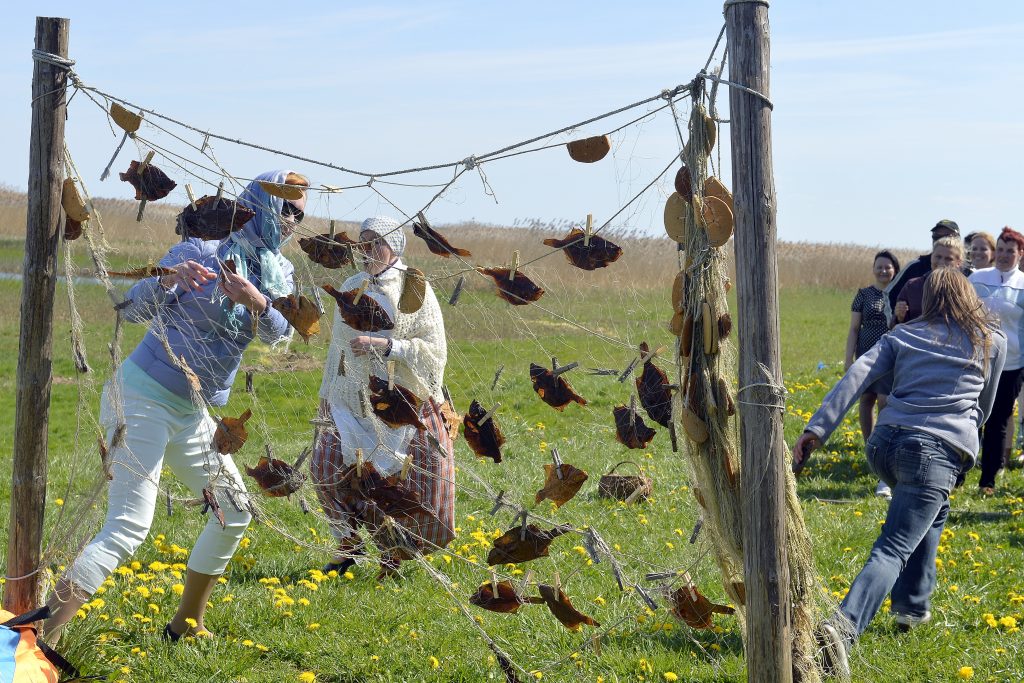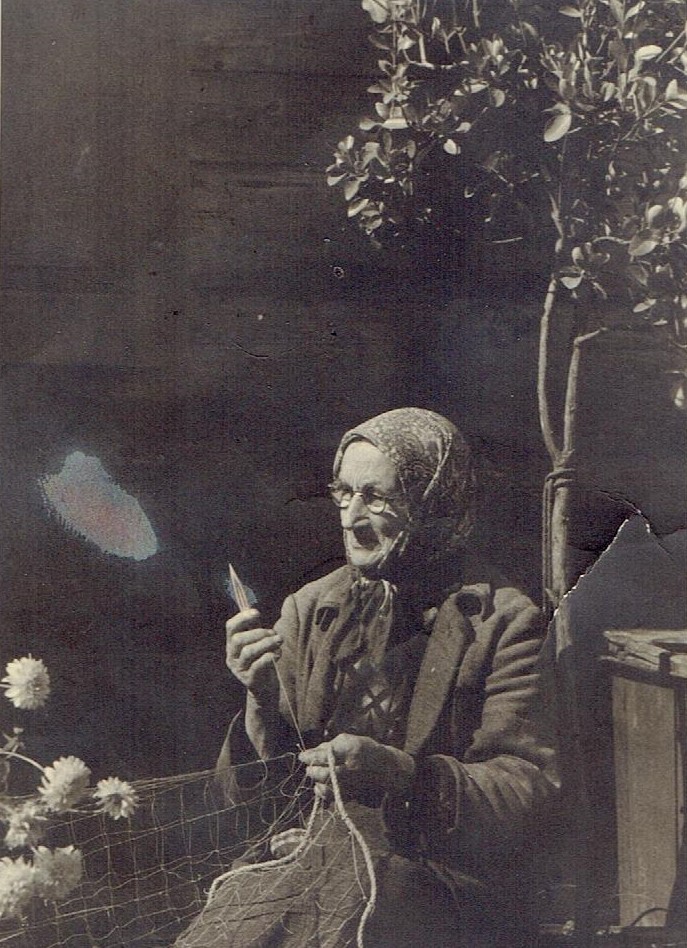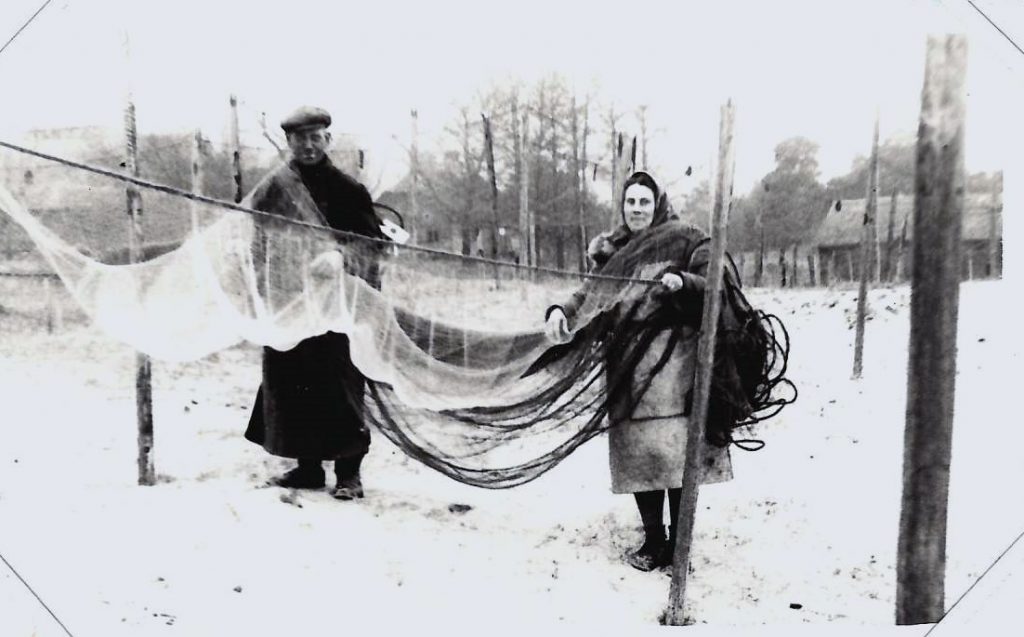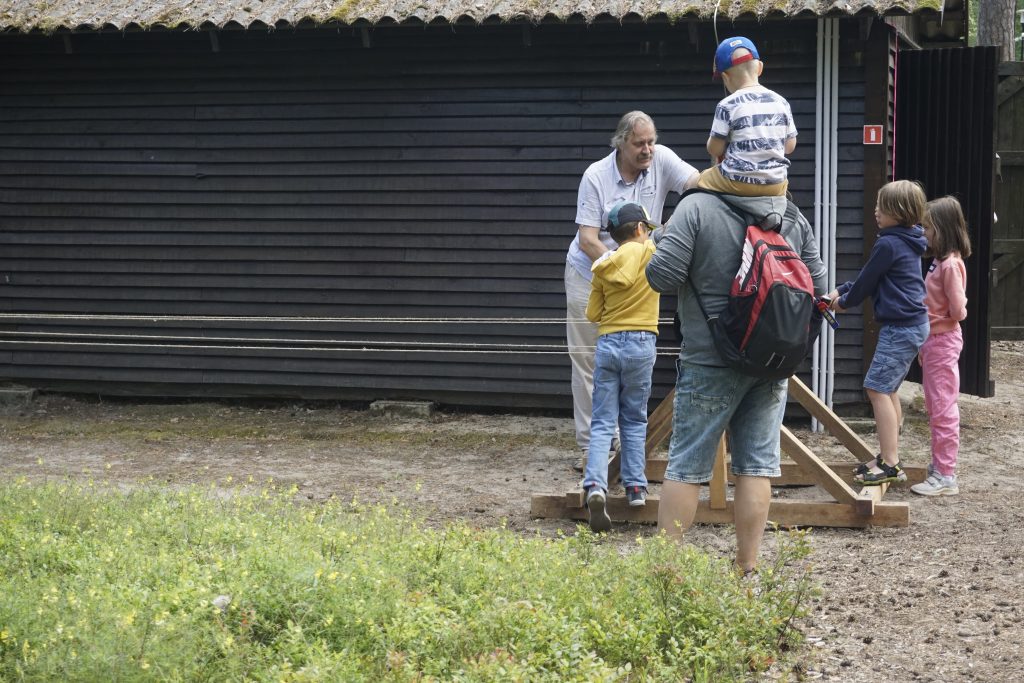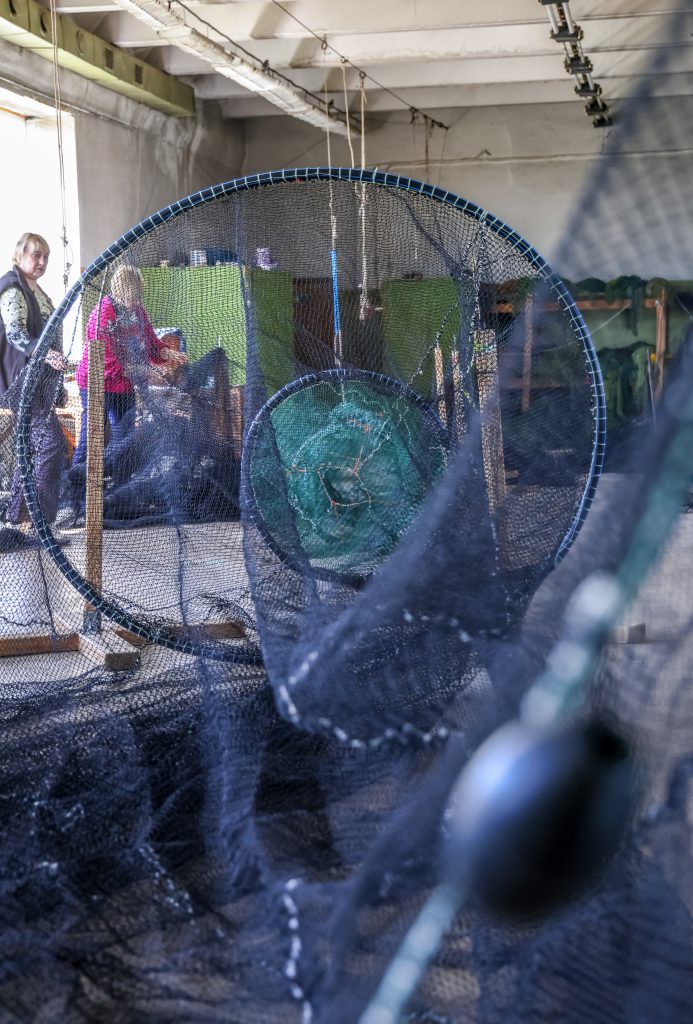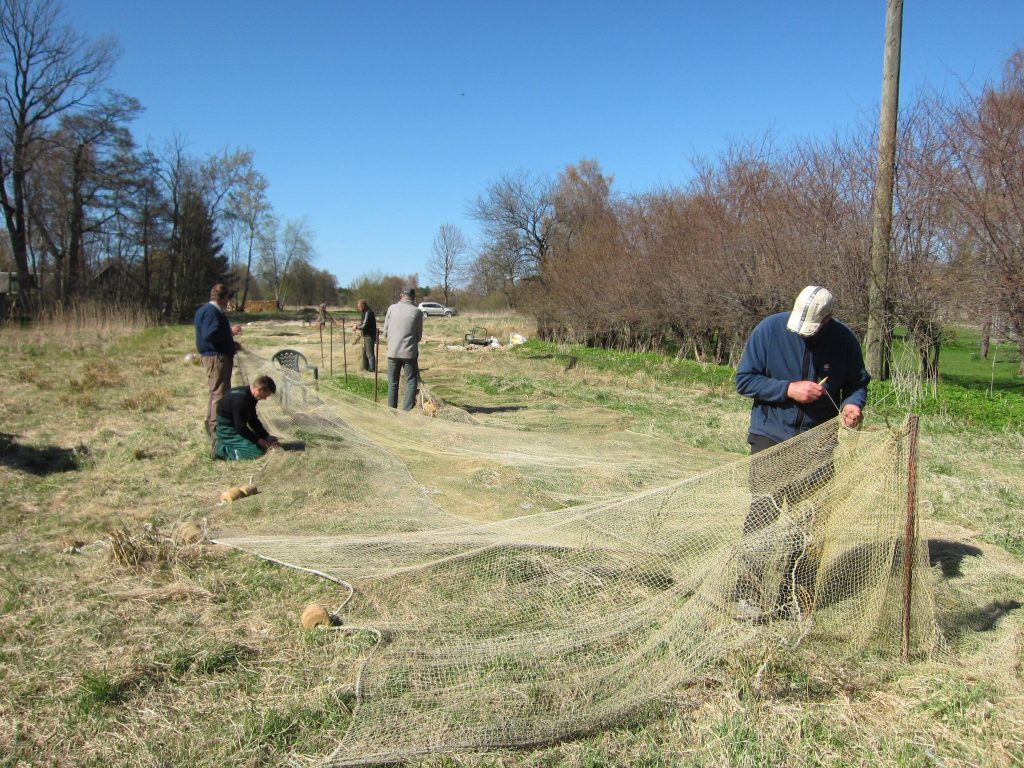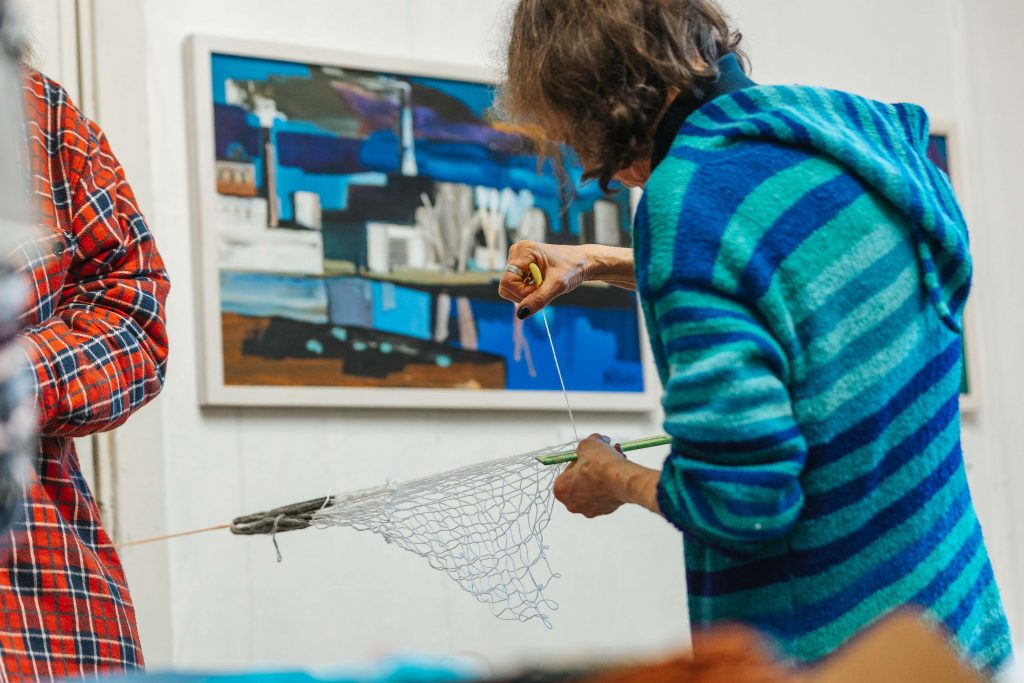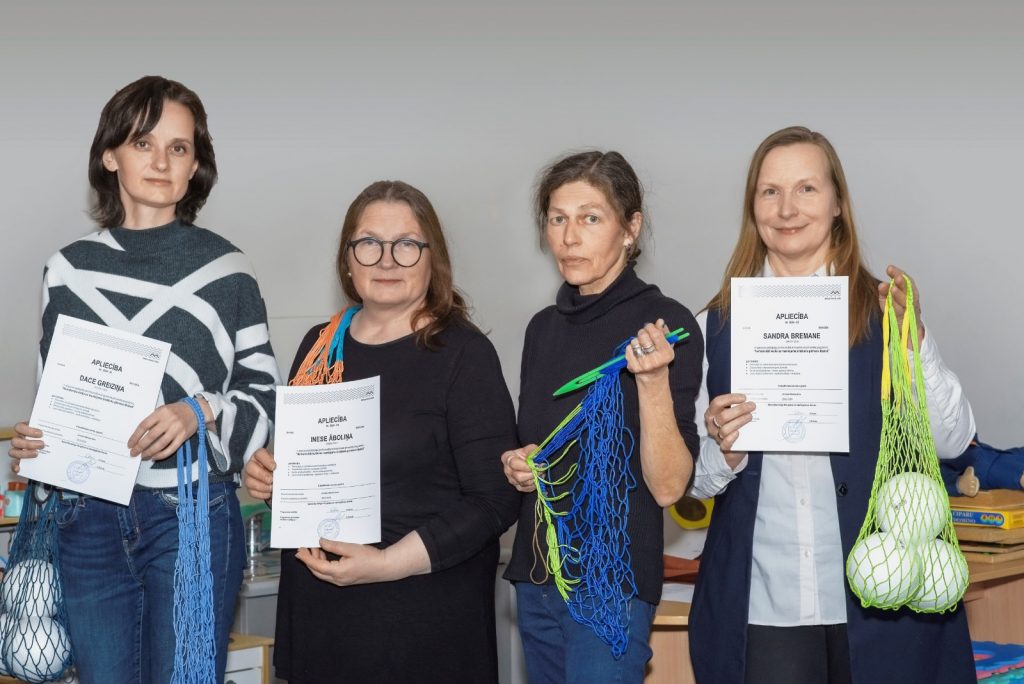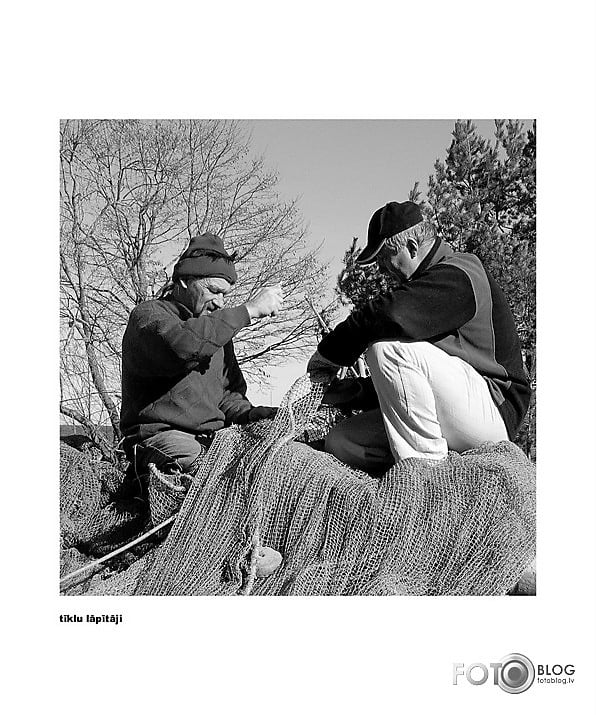Author:
Dace Ziemele, Anita Albert, Jolanta Kraukle, Ingrida Shmushkova
Oral traditions and their expressions, including language as a vehicle of intangible cultural heritage
Traditional craft skills
Title
Fishing net making on the western coast of the Gulf of Riga (2024).
Geography
Western coast of the Gulf of Riga
Today, the community of people skilled in the craft of fishing net-making can be divided into several groups. The main group comprises the craftspeople themselves: fishing net makers who worked in repair workshops, fishermen, and employees of fishing companies, as well as representatives of coastal fishing families, who still possess practical knowledge of the craft and have preserved memories of the fishing heritage. Due to socio-economic trends in the western part of the Riga Gulf coast, the number of community members and craftspeople varies slightly in populated areas of this territory. In the fishing villages of the Lapmežciems and Engure civil parishes in the Tukums municipality and the Mērsrags and Roja parishes in the Talsi municipality, for example, in Lapmežciems, Ragaciems, Bērzciems, Engure, Klapkalnciems, and Mērsrags, coastal fishing traditions have been preserved and entrepreneurship continues in this field, as does the application of fishing net-making knowledge. Noteworthy examples include net makers Ligita Štāla and Indra Riekstiņa from SIA Šote, Zelma Čepeļevska from Lapmežciems, and fishermen Uldis Meiers, Edgars Egle, Oļis Apšenieks, Kristaps Sils, and Ilmārs Raginskis from Ķesterciems, as well as fishermen from Ķirkrags and other fishing villages in Talsi region. Toms Birznieks is one of the new generation of trawl masters and enthusiasts of his craft. The oldest fishermen, including Arvīds Strupis from Lapmežciems, have preserved the necessary skills and knowledge related to fishing gear, including the production and maintenance of nets. They pass on their knowledge to the younger generation. In the Jūrmala area, where development focused on tourism, there are few individual fishermen and net makers. However, Ināra Everte and Zoja Milovidova, who worked in the fishing gear repair workshop of the former fishing collective farm Uzvara and the joint stock company Jūras līcis, have preserved these skills and knowledge, as has fisherman Dainis Štāls. As the fishing industry is not currently experiencing rapid development, this community is shrinking.
Another important part of the fishing net maker community are those who preserve and promote cultural heritage. These specialists include historians, museum staff, and creators of historical exhibitions who work at the Jūrmala Museum, the Jūrmala Open-Air Museum, the Lapmežciems Museum, and the Roja Maritime Fishing Museum and its branch, Kaltenes Klubs. The heritage preservation process is maintained and promoted by cultural heritage centres, associations, and tourism entrepreneurs. These include the Apšuciems Fishing and Cultural Heritage Centre, the Engure Community Centre, the Jūrmalas Amatnīcas association, Tukuma audējas studio, Dieniņas Fishermen's Farmstead in Bērzciems, craftspeople and the Ragaciems Sedums (sedums – the place where fishermen returning from fishing in the sea bring their boats, dry nets, etc.), which has been restored by local residents.
The community also includes museum visitors, masterclass participants, and other interested individuals who are indirect members of the community.
Significance in community life
The craft of fishing net-making is considered the foundation of the community’s cultural heritage and identity, as fishing and net-making were the coastal population’s most important economic activities for centuries. Even today, coastal residents continue to engage in fishing-related businesses and preserve and maintain fishing net making skills. However, with technological advances, the process has changed – it is now done industrially using synthetic materials. Fishermen now mainly buy ready-made nets. It should also be noted that industrially produced net twine is used to make fishing nets and other fishing gear. Consequently, traditional fishing net-making skills are losing their significance. However, net mending has remained unchanged – it is still done by hand today.
As the fishing industry has declined, traditional net-making has become a cultural and historical heritage and a cultural tourism attraction.
Nevertheless, the significance of fishing heritage, including net-making, in community life is demonstrated by the initiatives of cultural and historical institutions associated with the fishing industry along the coast. The Jūrmala Open-Air Museum promotes community cohesion and the preservation of craft skills and knowledge, including through demonstrations of net mending and rope making. The museum’s exhibits provide information about the craft of making fishing nets. It displays fishing nets made from natural fibres and the tools used to make them. Its rope-making workshop boasts an impressive array of rope-making tools and materials.
Ragaciems Sedums is known as a ‘living museum’, where local fishermen still use the existing net sheds to store their fishing gear, including nets. Ragaciems is a meeting place created by the fishing community where evidence of the fishing trade and the traditions and lifestyle of the fishing village residents is preserved to this day.
The Lapmežciems Museum exhibition centre provides information about fishermen and their way of life and work throughout the centuries.
The Fishing and Maritime Heritage Centre in Apšuciems, Engure Parish, has a historical artefact exhibition that provides insight into everyday coastal life. The Engure Community Centre, located in the former Engure Maritime School building, has exhibits on the history of the school and the parish. The Roja Maritime Fishing Museum recounts the history and development of coastal fishing villages.
The community’s commitment to preserving the craft of fishing net making is evident in the ongoing inclusion of demonstrations of net making and repair in the Coastal Fishermen’s Festival and Sea Festival. During these celebrations, competitions have also been held between the best net menders and weavers. Local entrepreneurs are also actively involved in preserving and promoting coastal heritage. For instance, the cultural and historical heritage is preserved in Bērzciems at the Dieniņas Fishing Farmstead, where visitors learn about the daily lives of fishermen. The culinary heritage is also being preserved there. In Ķesterciems, the Pludmalis hostel offers visitors the chance to learn about the cultural and historical heritage of net-making and mending.
Activities
A variety of fishing gear is used for fishing, including nets. Net making is a traditional skill that was once familiar to almost every member of a fishing community.
A traditional fishing net consists of hand- or machine-woven net fabric or mesh, with selvedge made with a coarser thread. The mesh is then secured to ropes. Floats are attached to the top of the net to keep it above the water. Weights are attached to the ropes at the bottom of the net. The length, width, mesh size, and other design features of the net were adapted to the local terrain, fishing season and specific fish species (Benita Laumane). (Benita Laumane: Names of Fishing Gear on the Latvian Coast, Liepāja: LiePA, 2019).
The following were used for weaving or knitting the net:
• a net hook or pole to which the net was attached;
• a shuttle (saiva) for weaving the net;
• a net weaving table to ensure the mesh openings were uniform in size;
• a thimble knife to cut the thread during weaving.
The shuttles were made from the timber of deciduous trees, such as birch, apple, ash, juniper and cherry. Nowadays, industrially manufactured plastic shuttles are used.
The net is woven with a shuttle onto which linen or cotton thread is tightly wound. The mesh opening of the net is formed with two shuttle throws. The shuttle with the thread to be woven is pulled through the already woven mesh opening. Then, with a second stitch, the shuttle is pulled through the mesh at the bottom, forming a knot that is tied tightly. The loops of thread that form the mesh are the mesh openings or ‘eyes’.
Several types of universal knot were used to weave fishing nets. In her 2019 study, Zvejasrīku nosaukumi Latvijas piekrastē (Names of Fishing Gear on the Latvian Coast), Biruta Laumane refers to Andrejs Šulcs’s 1961 book, Jūras zvejniecības darba rīki Ziemeļkurzemē 19. gs. otrajā pusē (Fishing Tools in Northern Kurzeme in the Second Half of the 19th Century). This book mentions that two types of knots were commonly used for tying fishing nets: single and double knots. A simple knot is made with one move of the shuttle, while a double knot is made with two moves. Double knots can be further divided into straight and slanted knots. Straight knots were used when the net was made from coarser, twisted threads. The simple knot was tied over the finger and, although this method was somewhat complicated, it was quicker than tying a double knot.
To attach the net to the rope, it had to be tied with a coarse thread called tamza in several layers.
The repair of fishing nets is equally important and is still done by hand. Mending a torn net involves the same techniques as weaving a net. The same types of knots are used as in the original net. During the repair process, the net must be stretched in layers so that the new layers resemble the mesh being mended.
Beliefs, rituals, and unwritten rules
Fishing is one of the oldest crafts mentioned in Latvian folk songs, fairy tales, and folk beliefs.
The electronic information source www.dainuskapis.lv, under the category 'Vastlāvis Zvejas Svētki: Galda Dziesmas Zvejnieku Svētkos' (Vastlāvis Fishing Festival: Table Songs at the Fishing Festival), includes a folk song sent in from Lapmežciems. Galda dziesmas Zvejnieku svētkos' (Vastlāvis fishing festival. Table songs at the fishing festival), includes a folk song sent in from Lapmežciems:
“The sea mother asked me,
‘What are my fishermen doing?’
They are weaving nets and sharpening oars,
Sitting on the hilltop.”
The website ‘Latviešu tautas ticējumi’ (Latvian folk beliefs) mentions several beliefs related to making fishing nets. For example, one belief recorded in Asari contains a message about ensuring a successful catch: ‘The net must be started on Sunday during church time so that the fish fill the net like people fill the church.’ Another belief states that ‘you must not spit on the net or stand on it, or the fish will not be caught’. The Lapmežciems Museum has preserved the following beliefs: ‘When fishing resumes after winter or a new net is cast, you must not give anything to anyone else, or they will be jealous. When a new boat is being pushed onto the shore or nets are being cast, women must not cross the path.’ There is also a belief in Lapmežciems related to modern fishing: ‘When a ship is trawling, the trawler master should not shave his beard, lest he tear the trawl.’
Passing on and transferring skills
Historically, the skills of fishing net-making were passed down within families. Children in fishing families were involved in fishing net making from an early age. During the Soviet era, when fishing collectives were established, workshops for repairing fishing gear were set up where master craftswomen passed on their net-making and repair skills to their apprentices. During this period, fishing-related skills were actively promoted among schoolchildren. For instance, one of the tasks in the ‘Do You Love the Sea?’ competition was to test net mending skills.
Nowadays, with industrially manufactured fishing nets available to buy, the craft of net-making and its transmission within families is gradually disappearing.
Currently, knowledge is being passed on in a few net-making workshops located on the coast, where master craftswomen teach net-making skills to new employees. Another way of passing on the craft of fishing net-making is through learning and using weaving techniques in areas unrelated to fishing. Demonstrations of net weaving and mending, rope making, and so on, at cultural events, cultural and historical institutions, and cultural tourism and educational activities are an important way of introducing the public to craft skills.
History
Until the early years of the second half of the 20th century, coastal fishing was carried out by individual or group fishermen to provide for their families. The net has always been the most important tool for fishermen. Until the beginning of the 20th century, net making was one of the most important tasks for every fishing family.
Otomārs Kalpiņš’s book Sāļumā. Ragaciema jūras karaļa stāsts (In Salt: the Story of the Sea King of Ragaciems) mentions that the company Baltijas linu manufaktūras kompānija (Baltic Linen Manufacturing Company), founded in Riga in 1859, played an important role in the development of net making. The company began weaving nets of various types and sizes from coarse and fine cotton threads on an industrial scale. Fishing nets woven in factories and imported from abroad also appeared. In his 1998 book Zveja un zvejnieki 19.gs. (Fishing and Fishermen in the 19th Century), Saulvedis Cimermanis writes that by the end of the 19th century, hemp nets woven at home had almost disappeared from the coast. It was easier for fishermen to buy cotton nets than to make them at home. Only net mending and setting took place at home.
Andrejs Šulcs, in his 1961 book, concludes that the introduction of the term ‘linumu aust’ (to weave a mesh), which replaced ‘linumu siet’ (to tie a mesh), was also linked to the use of industrially automatised or semi-automatised process of weaving nets.
After World War II, during the Soviet period, fishermen living on the western coast of the Gulf of Riga were forced to join collective farms and fish according to a government-set plan. As ever-increasing catches were demanded and fishing intensified, kolkhoz-owned boat repair shops and workshops for making and repairing fishing gear became necessary. The net repair workshops were usually staffed by women who knew how to mend nets and make fishing gear such as trawls and murds according to drawings. The net twine and rope workshops received ready-made materials from factories.
NET WEAVING
Pauls Ludvigs’s 1939 book Dažādi tīklu un aušanas paņēmieni (Various Net and Weaving Techniques) mentions that, like other fishermen on the Latvian coast, fishermen in the villages on the western coast of the Gulf of Riga used several tools for weaving and mending nets, including a shuttle, a fork, a weaving table, and a thimble-knife for cutting thread, as well as auxiliary tools such as a reel and a spinning wheel (Ludvigs 1939, pp. 344–355). Fishing nets were made from various materials. The oldest nets were made from linden bark; later, threads were spun from flax and hemp.
Until synthetic threads were introduced, universal knots were used for weaving fishing nets in Latvia.
In his book Jūras zvejniecības darba rīki Ziemeļkurzemē, Andrejs Šulcs writes that, in the second half of the 20th century, when nets woven from nylon, kapron and perlon appeared, the cells of the mesh were connected by fusing and without knots (Šulcs 1961, p. 158).
NET MENDING AND STORAGE
As nets were often damaged during fishing, it was important to mend, process and preserve them. Net mending was done by hand using a shuttle and a mending table. Mending a torn net involved using the same types of knots as in the original net and was similar to weaving a net.
To store and use the nets for a long time, fishermen treated them. One of the oldest methods of preserving fishing nets was smoking them. This method was used in the 19th century when nets were made from hemp and linen threads. To make the net less visible to fish in the water it was dyed a darker colour by boiling in a decoction of lime, alder, oak bark, spruce, and pine cones. This method of preserving fishing nets is described in No. 34 issue of Zemkopis (1929). However, careful handling was the main method of maintaining nets. After each fishing trip, the nets had to be cleaned, washed and thoroughly dried. If a fisherman did not take good care of his most important tool, the net would not last long. Net maintenance was particularly important in autumn, when the nets had to be washed and prepared for use in spring.
THE IMPORTANCE OF NETS TODAY
The importance of fishing net-making in fishing has not changed. However, with technological advances, the process of making fishing nets has changed. Nowadays, fishing nets are produced industrially and fishermen usually buy their nets. However, there are still a few net workshops in Latvia. For example, in 2024, there was a fishing net and gear repair workshop in Engure.
MENDING FISHING NETS IS STILL DONE BY HAND
As the fishing industry has declined, fishing net making and related traditions are being preserved through cultural tourism and activities. Over the past three years, there has been growing interest in diverse net weaving techniques. Community and resident surveys also show that there is a strong view that fishing and fishing net making should be preserved as part of the cultural and historical heritage of the coast.
Additional Information
Fishing and fishing net-making skills are linked to the value of the coastal landscape, which is included in the Latvian cultural canon. In the past, an integral part of the coastal landscape of fishing villages were the valgums or sedums, where net sheds and boats were located, and nets were dried on racks.
The craft of fishing net-making is also linked to oral traditions and expressions. Research shows that names related to fishing, fishing gear, and fishing grounds are very diverse and that some are still in use today. For instance, in coastal villages, fishing net floats (pludiņi) are also known as plūksnas. Two names are used for the area where boats are moored on the coast of the western part of the Gulf of Riga: sedums and valgums. From Lielupe to Vaivari, it is called a valgums, while from Kaugurciems to Lielirbe the name is sedums. In Engure, Mērsrags, Kaltene and Roja, the word sadums is also used. The pole to which the fishing net was attached (statnis), but in Kaugurciems and Engure it was called āķis or tīklāķis and elsewhere along the coast it is known as an ārķis or krāģis. (Benita Laumane, 2019).
Historically, tools for making fishing nets were made by fishermen or craftsmen. Consequently, fishing net making is also linked to other crafts. For example, rope making and woodworking (e.g. making shuttles). Natural fibres from flax and hemp were used for weaving and net making, so the craft of net making was also linked to the preparation of textile fibres, including the cultivation of flax and hemp.
Fishing nets are closely linked to the development of property marks. Each net owner would engrave a property mark on floats, fish baskets, poles and other fishing gear so that they could identify their nets. Geometric symbols and their derivatives were used, as well as the initials of the fisherman’s first and last name. The ownership mark was usually passed down to the son, the next generation of fishermen, and remained unchanged as it was passed down through the generations.
THE PRODUCTION OF FISHING NETS IS ALSO CONNECTED TO THE RHYTHM OF TIME AND NATURE, AND TO SEASONAL CUSTOMS AND TRADITIONS
In fishing villages, Metenis or Vastslāvis was known as the fishermen’s holiday or the day of the helmsman. In his book Bigauņciema un tā apkārtnes zvejnieki (The Fishermen of Bigauņciems and Its Surroundings), published in 1937, Jēkabs Štūlis writes: ‘The most important day for fishermen was Vastslāvis. A couple of weeks in advance, the helmsman would gather his crew to discuss whether or not to celebrate Vastslāvis, as it incurred expenses of 30–50 rubles, which had to be recouped in the spring.’ The Jūrmala Museum’s collection of Fricis Dambeskalns’s memories of the Vastslāvis celebrations mentions that the helmsman would bake white bread and brew beer to organise a celebration for his people.
Meanwhile, Vilis Veldre’s 1939 book Dzīve pie jūras (Life by the Sea) mentions that, “in Kaugurciems, men were hired for winter fishing around Mārtiņi (Martin’s Day), which was called ‘fishermen’s wedding’. On that day, the men gathered at the helmsman’s house and asked to be accepted into the crew. When all the men had spoken with the helmsman, the drinks and snacks prepared together were brought to the table and the dancing and merrymaking began, just like at a wedding, and continued all night long.”
Masters
• Ināra Everte – former employee of the fishing collective (Z/K) Uzvara and the joint stock company (A/S) Jūras līcis fishing equipment repair workshop (Jūrmala);
• Dainis Štāls, fisherman from Jūrmala/Lapmežciems;
• Anitra Tooma, craftswoman (Jūrmala/Roja);
• Zoja Milovidova, former employee of the fishing gear repair workshop at Z/K 'Uzvara' and A/S 'Jūras līcis' (Jūrmala);
• Ligita Štāla, SIA Šote (Engure);
• Indra Riekstiņa, SIA Šote (Engure);
• Toms Birznieks, trawler master (Ragaciems/Lapmežciems);
• Zelma Čepeļevska, net maker (Lapmežciems);
• Ilmārs Raginskis, fisherman at SIA Branga (Ķesterciems);
• Arvīds Strupis, fisherman (Lapmežciems);
• Arvis Kalnpurs, fisherman (Lapmežciems);
• Kristaps Sils, fisherman (Lapmežciems);
• Olafs Apšenieks, fisherman (Lapmežciems);
• Edgars Egle, fisherman (Lapmežciems);
• Uldis Meiers, fisherman (Lapmežciems);
• Modris Mukāns, woodworker and knife maker (Degole Parish);
• Modris Mukāns, woodworker and knife maker (Degole Parish).
Agencies and institutions
• Jūrmala Museum;
• Jūrmala Open-Air Museum;
• Jūrmalas amatnīca Association;
• Folklore group Mare;
• Lapmežciems Museum;
• Labklājība Association;
• Senior Citizens’ Association;
• Local residents’ initiative: Ragaciema Sedums;
• Engure Community Centre;
• SIA Šote;
• Apšuciems Fishing and Maritime Heritage Centre;
• Engure Community Centre;
• Dieniņas Fishermen's Farmstead (Bērzciems);
• Pludmalis Hostel (Ķesterciems).
Consolidation
In light of the rapid decline in the number of people with skills in fishing net making, cultural and heritage institutions can currently play a significant role in preserving and consolidating these skills. Collecting and documenting historical evidence, as well as organising festivals and other events related to fishing traditions where these skills are demonstrated, helps to preserve and popularise them.
Cultural and memory institutions (Jūrmala Open-Air Museum, Lapmežciems Museum, Engure Parish Apšuciems Fishing and Maritime Heritage Centre, Engure Community Centre, Roja Sea Fishing Museum and its branch, 'Kaltenes Klubs') complement their historical exhibitions with events that promote the preservation of these skills and make them accessible to the public. For instance, the Jūrmala Open-Air Museum organises an event called ‘Thursday – Fish Day’ in the summer, featuring demonstrations of fishing net mending and rope making. The museum also offers educational classes, including ‘Festivities at Fishermen’s Farmsteads’, ‘Rope Workshop’, and ‘A Day in a Fisherman’s House’. The Ragaciems Sedums provides an insight into what a sedums looked like on the coast. The Fishing and Maritime Heritage Centre in Apšuciems, Engure Parish, has a training room where creative workshops and training courses on exploring the sea and passing on fishing skills to future generations are held.
Historical research into the development of fishing net making was carried out when work began on preparing the application for the inclusion of fishing net making skills in the Intangible Cultural Heritage List. With the support of the State Culture Capital Foundation (VKKF), work began on documenting these skills. During the application process, community workshops were organised and opportunities for transferring net-making techniques to modern design were identified. On 16 September 2023, the Jūrmalas amatnīca (Jūrmala Crafts) association organised the first masterclass in net weaving, teaching the technique. A professional development programme for teachers called ‘Transferring Old Crafts to Design’ has been developed and implemented in Jūrmala, giving people the chance to learn fishing net weaving techniques. On 6 April 2024, a workshop on making mesh shopping bags was held during the ‘Meet Your Master Craftsman!’ event, where the first four teachers also learned net weaving skills. Several masters from the Durbe Folk Applied Arts Studio learnt the net-weaving technique at the Tukums Weaving Workshop and have also led classes on creating household items.
In autumn 2023, the municipalities of Jūrmala and Tukums surveyed coastal residents and interviewed locals about preserving and passing on fishing heritage, including the associated skills of fishing net making. Of the 126 respondents who completed the survey, all supported the initiative to preserve the skill of fishing net making. The Jūrmala Museum collected stories from members of fishing families. In cooperation with the local community, the Lapmežciems Museum organised a discussion on the further development of the Fishermen’s Festival and the inclusion of fishing net-making in the festival programme.
The activities carried out so far, as well as the survey results, demonstrate support for the initiative to preserve the skill of fishing net-making. An important step in preserving and promoting this craft is preparing an application for its inclusion in the Intangible Cultural Heritage List. This process has provided an opportunity to assess existing heritage and identify communities whose craft skills are rapidly disappearing. This has encouraged further work on preserving the cultural and historical identity of the coast. It recognises that preserving fishing net-making skills today also highlights the importance of the fishing industry in developing the coast's competitiveness in the era of globalisation.
Support from the municipalities of Jūrmala and Tukums, as well as the Lapmežciems and Engure parish administrations, has ensured the continued operation of cultural heritage institutions related to fishing heritage, such as the Jūrmala Open-Air Museum, the Lapmežciems Museum, and the Engure Community Centre.
Non-governmental organisations in Jūrmala and Tukums Regions receive financial support for projects related to the preservation of fishing heritage and traditional crafts through cultural and community initiative project competitions. For instance, with the backing of the Tukums Municipality's NGO project competition, ‘Darām paši’ (Let’s Do It Ourselves), the Jūrciemi association implemented the ‘Photo Plenary and Exhibition: The Old Story of the Fishing Village’ project in 2021. With the support of the Jūrmala City Council’s residents’ initiative project competition, the Asne Association implemented the 'Jūrmalnieku koprades darbnīcas' (Jūrmala residents’ collaborative workshops) project in 2023. This included the ‘Senais jūrmalnieks jeb Mantojuma diena’ (Old Jūrmala resident or Heritage Day) event, which featured an ‘Old Skills Workshop’ at the Jūrmala Open-Air Museum. Additionally, the Jūrmala City Council and the Tukums District Council funded historical research into traditional crafts, specifically fishing net making and related traditions. Experts from various fields, including historians, entrepreneurs, museum staff, educators, craftsmen, and local government representatives, were involved in the application process and the development of the heritage preservation programme.
In 2023, the State Culture Capital Foundation supported the implementation of the project ‘Historical research and preparation of video material for the application for the inclusion of fishing net making skills in the Intangible Cultural Heritage List’.
In the future, closer cooperation with educational institutions (educational authorities and educational institutions) is planned, as well as cooperation with research institutions. One of the priorities will be to establish cooperation with local governments and cultural institutions in the Baltic Sea region. There are also plans to start cooperating with fisheries policymakers on preserving fishing traditions and heritage.
Continuation/development
To promote research into fishing net-making skills, knowledge, and related traditions, a five-year preservation plan (2025–2029) has been developed. One of its priorities is to continue researching the knowledge and heritage of fishing net-making skills, ensuring that new evidence is documented and disseminated. The plan outlines activities that will promote wider public interest in and awareness of cultural heritage, particularly the skills and knowledge involved in fishing net-making.
To promote the preservation and development of these skills and knowledge, as well as related traditions, the document ‘Five-Year Plan for the Preservation of Fishing Net-Making Skills’ (2025–2029) sets out priorities related to education and cultural tourism:
• Inclusion of topics related to the preservation of fishing net-making skills and knowledge in cultural education programmes, including interest-based, lifelong and general education programmes within the framework of planned projects;
• Assessing fishing net-making skills as an important resource for enhancing cultural and creative tourism offerings;
• Integrating fishing net-making skills into existing coastal identity brands in Jūrmala and Tukums County, involving local entrepreneurs and craftsmen, and developing new tourism offerings and design products.
The attached Five-Year Plan for the Preservation of Fishing Net-Making Skills (2025–2029) aims to promote the preservation, development, and transfer of complex craft skills, raise awareness, strengthen the wider community, and actively involve the public in preserving this heritage.
Threats
Fishing nets and related craft skills are an integral part of the fishing process and the fishing industry. One of the main threats to preserving these skills is therefore the decline of the fishing industry. As the need for the practical application of these skills disappears, so does the incentive to pass them on or learn them. Consequently, the number of people with these skills is currently declining.
Another threat is the rising cost of manual labour. Gear (nets) produced by hand is far more expensive than industrially manufactured gear. Additionally, it should be noted that Chinese products, for example, are not repaired, generating waste and sometimes environmental pollution.
Changes in the legal framework governing the fishing industry, the declining prestige of the fishing profession, and the disappearance of the traditional coastal way of life also have an impact.
Applicant
Jūrmala City Council and Tukums Regional Council
Image Gallery
Video
Text Materials
Publications
Veldre V. (1991). Dzīve pie jūras. Rīga: Latvijas kultūras fonds (reprint. First edition: Veldre V. (1939). Vērojumi Latvijas jūrmalas zvejniekciemos. No Kolkas līdz Ainažiem. Rīga: Zemnieku domas)
Štūlis J. (1937). Bigauņciema un apkārtnes zvejnieki. Rīga: Zemnieka domas
Laumane B. (2019). Zvejasrīku nosaukumi Latvijas piekrastē. Liepāja:LiePA
Laumane B. (1987). Zvejvietu nosaukumi Latvijas PSR piekrastē. Rīga: Zinātne
Laumane B. (1996). Zeme, jūra, zvejvietas. Zvejniecības leksika Latvijas piekrastē. Rīga: Zinātne
Apsītis A. (2003).Virvju vīšanas piederumi. Rīga: Paraugtipogrāfija
Kalpiņš O. (2018). Sāļumā. Ragaciema jūras karaļa stāsts. Rīga: Latvijas mediji
Websites
Krišjāņa Barona Dainu Skapis website: – table songs recorded in Kaugurciems, Bigauņciems and Lapmežciems during the Vastlāvji fishing festival.

